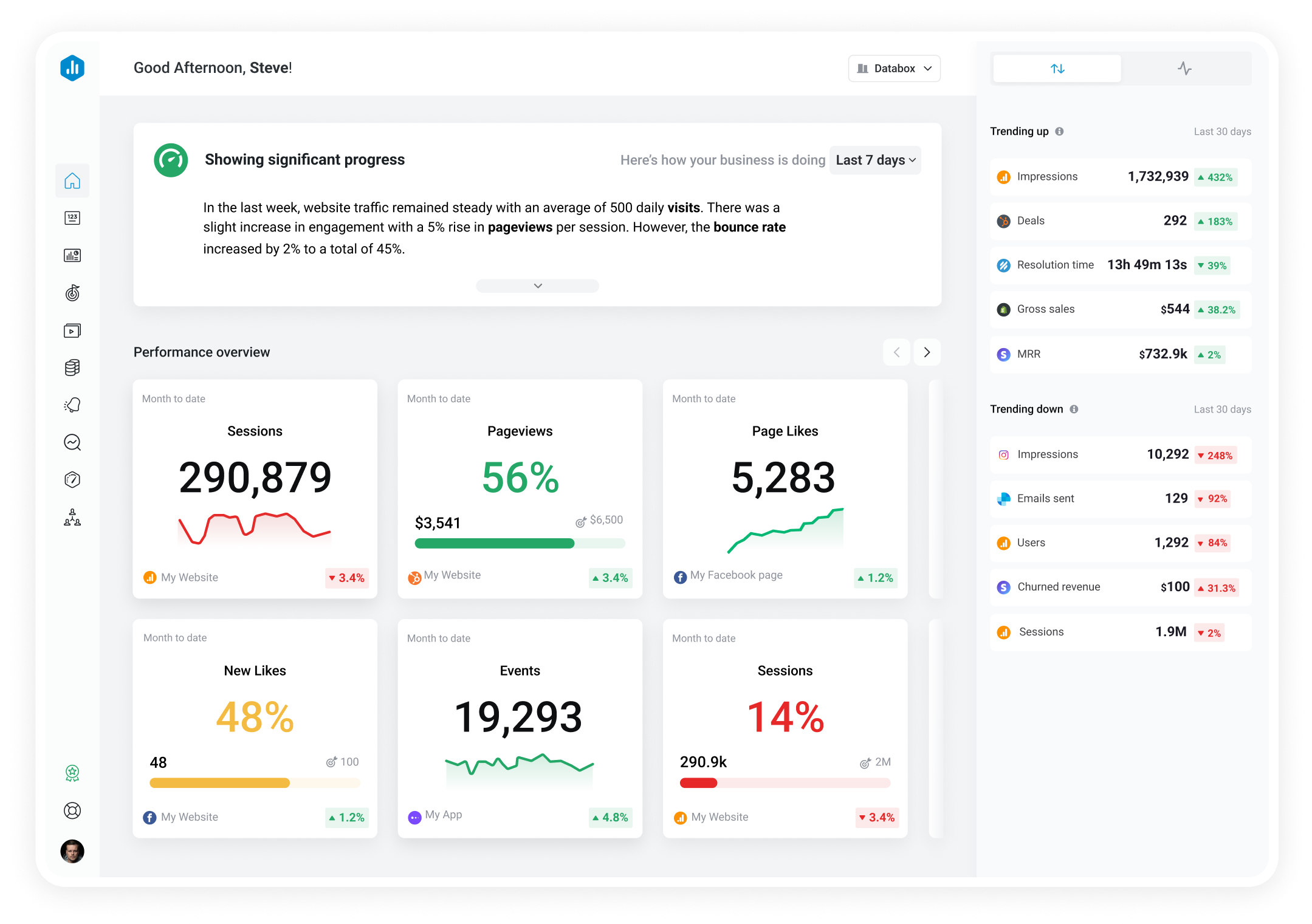Track all of your key business metrics from one screen
GET STARTED
 ChartMogul
Churn MRR
ChartMogul
Churn MRR Churn MRR measures the monthly recurring revenue lost from customers canceling their subscriptions or downgrading their plans.
With Databox you can track all your metrics from various data sources in one place.

Used to show a simple Metric or to draw attention to one key number.
Databox is a business analytics software that allows you to track and visualize your most important metrics from any data source in one centralized platform.
To track Churn MRR using Databox, follow these steps:
 Goals
Goals Scorecards
Scorecards Metric Digest
Metric Digest Metric Builder
Metric Builder Data Calculations
Data Calculations Performance Screen
Performance ScreenThis dashboard tracks key SaaS metrics like ARR, MRR, churned MRR, and customer churn rate. It provides insights into revenue retention, churn trends, and potential risks, helping businesses take corrective actions to improve customer retention.

